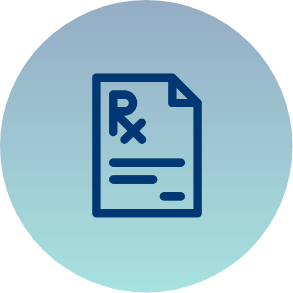





No lab centers are available in this city

Max Lab
Apr 25, 2025
Bradycardia is defined as a slower than normal heart rate, typically fewer than 60 beats per minute.
Bradycardia might sound alarming, but it simply means your heart is beating more slowly than usual under 60 beats per minute. For athletes and those who are very fit, this can be completely normal. But in other cases, a slow heart rate could be a sign that something isn’t quite right with your heart’s rhythm.
It falls under the category of arrhythmias, which are irregular heartbeat patterns. With bradycardia, the heart may not be pumping enough blood to meet the body’s needs. And when your organs and tissues don’t get the oxygen-rich blood they need, it can cause problems.
Bradycardia can happen for a variety of reasons. One of the most common causes is an issue with the heart's electrical system the signals that control your heartbeat may be delayed or blocked.
Certain health conditions can also play a part. For example, an underactive thyroid (hypothyroidism) or sleep apnea can slow your heart rate. These are often manageable, but they need attention.
Age is another factor. As we grow older, the heart’s electrical pathways may not work as smoothly, which can lead to a slower heartbeat.
Some medications especially those for high blood pressure or heart problems—can also lower your heart rate as a side effect.
In many cases, bradycardia goes unnoticed. But when symptoms do show up, they’re often due to the heart not pumping enough blood around the body. Common signs include:
To diagnose bradycardia, your doctor will typically begin with a physical exam and a look at your medical history.
One of the main tools for diagnosis is an electrocardiogram (ECG or EKG), which tracks the heart’s electrical activity. It helps identify if your heart rhythm is slower than normal or irregular.
If bradycardia doesn’t show up during the initial test, your doctor might recommend a Holter monitor. This is a portable device that records your heart’s activity over 24 hours or more.
Other tests, like stress testing or echocardiograms, might also be used to see how your heart performs during physical activity or to examine its structure and function in more detail.
Treatment for bradycardia depends on what’s causing it. In some mild cases, no treatment is needed—just regular monitoring.
For others, small changes in daily habits can help. Eating well, exercising, and managing stress can all support heart health.
If medication is causing your slow heartbeat, your doctor might adjust the dosage or explore alternatives. In certain cases, medications might be prescribed to help increase the heart rate.
In more serious cases where the heart rate is dangerously low, a pacemaker may be needed. This small device is placed under the skin and helps regulate your heartbeat by sending electrical signals when necessary.
While not all types of bradycardia can be prevented, there’s a lot you can do to reduce your risk.
Bradycardia might not always cause obvious problems, but in some cases, it can affect your overall well-being. That’s why it’s important to know the symptoms and understand what might cause a slower heartbeat.
Whether it’s due to age, a medical condition, or certain medications, identifying and treating bradycardia early can make a big difference. From lifestyle changes to medical interventions like pacemakers, there are plenty of ways to manage the condition and support your heart’s health.












Sign up takes less than 60 secs and gives you access to your offers, orders and lab tests.
Looks like you are not registered with us. Please Sign up to proceed
OTP will be sent to this number by SMS
We have successfully received your details. One of the agents will call you back soon.
 To reach our help desk call 9213188888
To reach our help desk call 9213188888
No Lab Centers are available in this city
Looks like you are not registered with us. Please Sign up to proceed
OTP will be sent to this number by SMS
Not Registered Yet? Signup now.Looks like you are not registered with us. Please Sign up to proceed





 7982100200
7982100200.png)
Comments